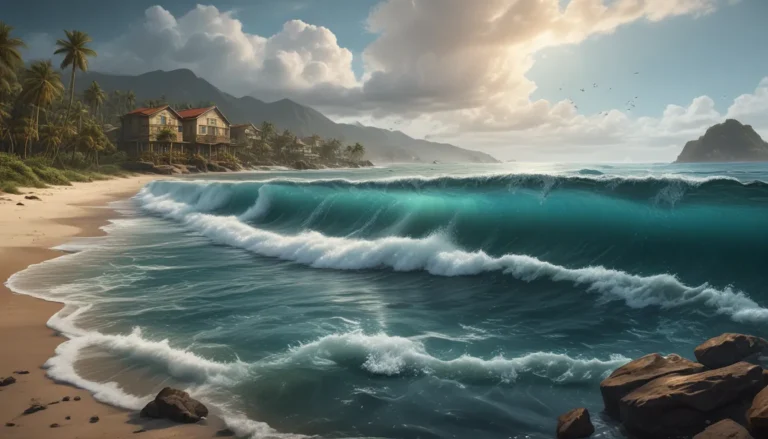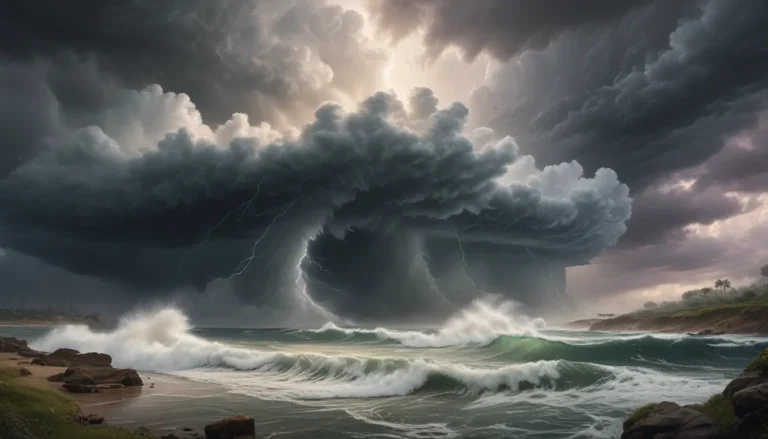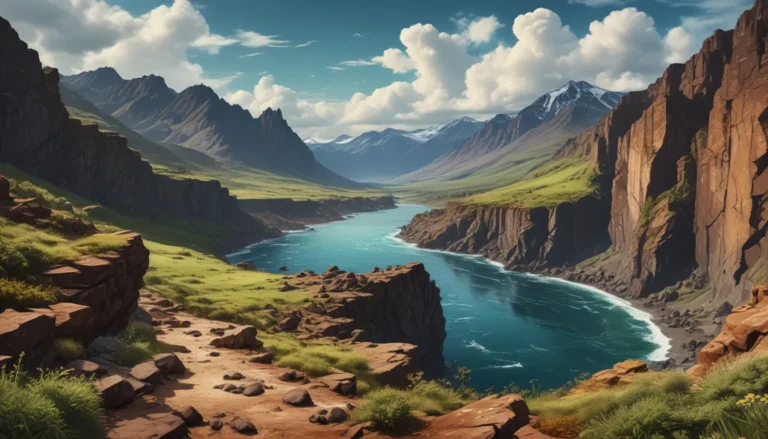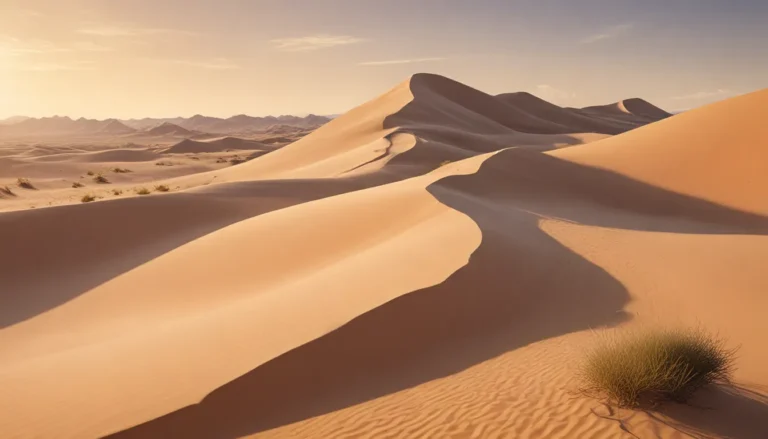A Note About Images: The images used in our articles are for illustration purposes only and may not exactly match the content. They are meant to engage readers, but the text should be relied upon for accurate information.
Welcome to the fascinating world of environmental geography, where we unravel the intricate relationship between Earth’s physical environment and the impact of human activities on it. This field delves deep into understanding natural processes, ecosystems, and patterns of landforms and climates, as well as how humans interact with and affect these environments. In this article, we will unveil 12 extraordinary facts about environmental geography that will not only astonish you but also deepen your understanding of the world we live in. From awe-inspiring natural wonders to mind-boggling human-made interventions, these facts highlight the interconnectedness of our planet’s various geographical aspects and emphasize the importance of preserving and conserving our environment. So, fasten your seatbelts and get ready to embark on a journey of discovery as we explore the wonders and complexities of environmental geography!
Discovering Earth’s Natural Wonders:
- The Amazon Rainforest and Great Barrier Reef are vital for Earth’s climate and biodiversity, but face threats from climate change.
- Earth’s diverse geography, from the Himalayas to the Nile River, is a wonder to appreciate and protect for a sustainable future.
The Amazon Rainforest: A Marvel of Biodiversity
The Amazon Rainforest is the largest tropical rainforest in the world, covering over 5.5 million square kilometers. It is home to an incredible diversity of plant and animal species and plays a vital role in regulating the Earth’s climate as a carbon sink, absorbing vast amounts of carbon dioxide from the atmosphere.
The Great Barrier Reef: A Coral Wonderland
Stretching over 2,300 kilometers, the Great Barrier Reef is the largest coral reef system on the planet. Located off the coast of Australia, it is teeming with vibrant marine life and provides a habitat for thousands of species of fish, corals, and other organisms.
The Sahara Desert: A Land of Extremes
Spanning over 9 million square kilometers, the Sahara Desert is the largest hot desert in the world. Known for its vast sand dunes and extreme temperatures, it is also home to a surprising variety of plant and animal life that has adapted to survive in this arid environment.
The Dead Sea: Earth’s Lowest Point
Situated at an elevation of approximately 430 meters below sea level, the Dead Sea is the lowest point on Earth. Its high salt content makes it impossible for organisms to thrive, leading to the name “Dead Sea.” However, its mineral-rich waters have long been recognized for their therapeutic properties.
The Great Lakes: A Freshwater Treasure
Consisting of five interconnected lakes, the Great Lakes form the largest group of freshwater lakes on Earth. Holding about 84% of North America’s fresh surface water, they are renowned for their beauty and recreational opportunities.
The Himalayas: Majestic Mountain Ranges
Stretching across several countries, including Nepal, India, China, and Bhutan, the Himalayas are the highest mountain range in the world. Home to numerous mountain peaks, with Mount Everest being the highest of them all, this majestic range holds immense cultural and spiritual significance.
Witnessing Natural Phenomena:
- The Northern Lights, or Aurora Borealis, can be seen in polar regions.
- The Pacific Ring of Fire is an area of high volcanic and seismic activity.
The Northern Lights: A Celestial Spectacle
The mesmerizing Northern Lights, or Aurora Borealis, are formed when charged particles from the Sun interact with Earth’s atmosphere, creating beautiful displays of colorful lights in the night sky. The best places to witness this phenomenon are in the Arctic and Antarctic regions.
The Pacific Ring of Fire: A Hotspot of Geological Activity
Stretching from the coasts of the Americas to East Asia, the Pacific Ring of Fire is known for its high volcanic and seismic activity. Characterized by tectonic plate boundaries, this area is highly prone to earthquakes, volcanic eruptions, and tsunamis.
The Nile River: Earth’s Longest River
Flowing through eleven countries in northeastern Africa, the Nile River spans a distance of about 6,650 kilometers. It has played a significant role in the development of ancient civilizations, providing water, transportation, and fertile soil for agriculture.
The Galapagos Islands: Evolutionary Marvels
Located in the Pacific Ocean, the Galapagos Islands are famous for their unique and diverse wildlife. Renowned for their distinctive fauna and flora, they inspired Charles Darwin’s theory of evolution, leading to groundbreaking scientific discoveries.
Ensuring Environmental Conservation:
- The Great Barrier Reef is under threat from climate change.
- The Amazon Rainforest is referred to as the “lungs of the Earth.”
The Great Barrier Reef: A Fragile Ecosystem
Rising ocean temperatures and ocean acidification due to climate change are causing severe damage to the Great Barrier Reef. Coral bleaching, caused by stress to the corals, is leading to the loss of vibrant colors and the decline of marine biodiversity in the area.
The Amazon Rainforest: Earth’s Vital Organ
Due to its vast size and abundant vegetation, the Amazon Rainforest produces approximately 20% of the world’s oxygen. Referred to as the “lungs of the Earth,” it plays a crucial role in mitigating climate change by absorbing carbon dioxide and releasing oxygen into the atmosphere.
Embracing Sustainable Practices
In conclusion, environmental geography offers valuable insights into the complex interactions between humans and the environment. By studying the physical, biological, and cultural aspects of different regions, environmental geographers gain a deeper understanding of how ecosystems function and are impacted by human actions. From analyzing climate patterns to studying natural resource management, environmental geography provides crucial information to support sustainable development and conservation efforts. Let’s appreciate the extraordinary facts about environmental geography and work together to protect and preserve our planet for future generations.
Frequently Asked Questions
-
What is environmental geography?
Environmental geography is the study of the interactions between humans and their environment, examining how physical, biological, and cultural factors influence the distribution and characteristics of natural landscapes and resources. -
What are some examples of environmental geography?
Examples include analyzing climate patterns, studying the impact of urbanization on ecosystems, investigating natural resource management, and exploring the effects of pollution on aquatic systems. -
What are the career opportunities in environmental geography?
Career opportunities include working in environmental consulting firms, government agencies, research institutions, and non-profit organizations. Environmental geographers can also pursue careers in environmental planning, natural resource management, or environmental education. -
How does environmental geography contribute to sustainability?
Environmental geography contributes to sustainability by providing insights into the impact of human activities on the environment, helping identify risks, and developing strategies to promote sustainable development and conservation of natural resources. -
Why is studying environmental geography important?
Studying environmental geography is crucial as it helps us understand the complex relationship between humans and the environment, providing the knowledge needed to make informed decisions and develop sustainable solutions for a better future.
Conclusion
As we continue to face global challenges such as climate change and deforestation, the knowledge gained through the study of environmental geography becomes increasingly important in shaping our decisions and actions. By promoting a deeper understanding of our planet’s ecosystems and their interactions with human activities, environmental geography offers the opportunity to create a more sustainable and resilient world for generations to come. Let’s embrace the wonders of environmental geography and work towards a harmonious coexistence with nature.
Your Feedback Matters
We strive to deliver trustworthy and engaging content, with each fact contributed by real users like you. Our commitment to quality and authenticity ensures that the information we share is not only fascinating but also credible. Trust in our dedication to providing valuable insights as you explore and learn with us.






